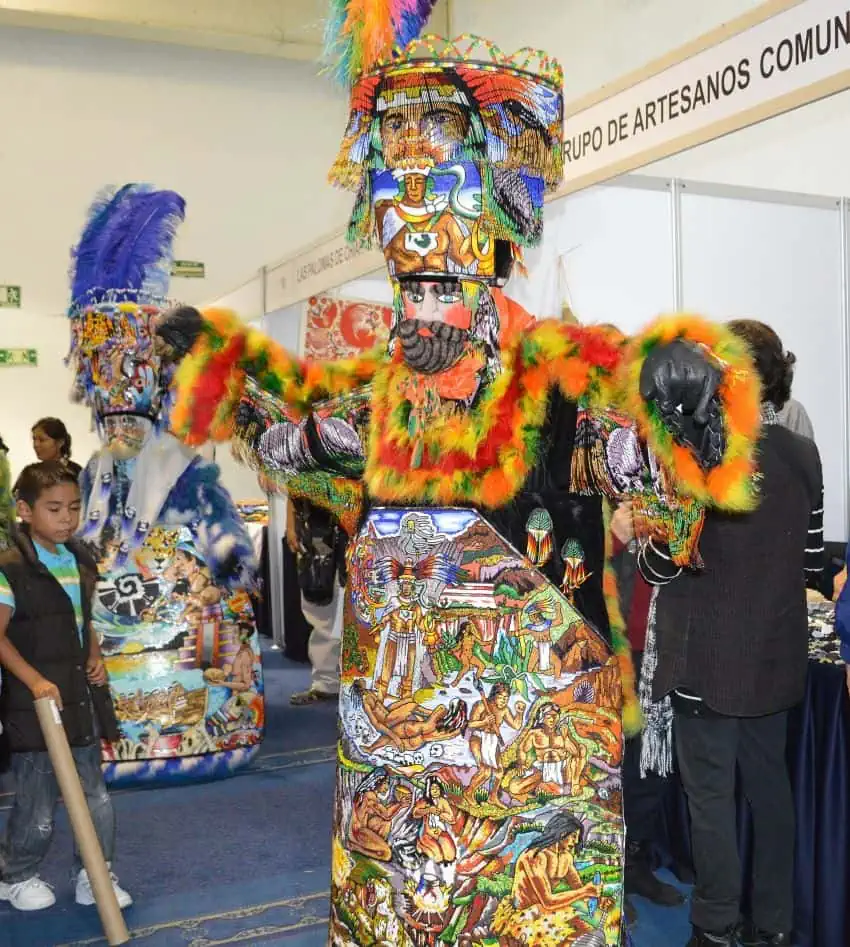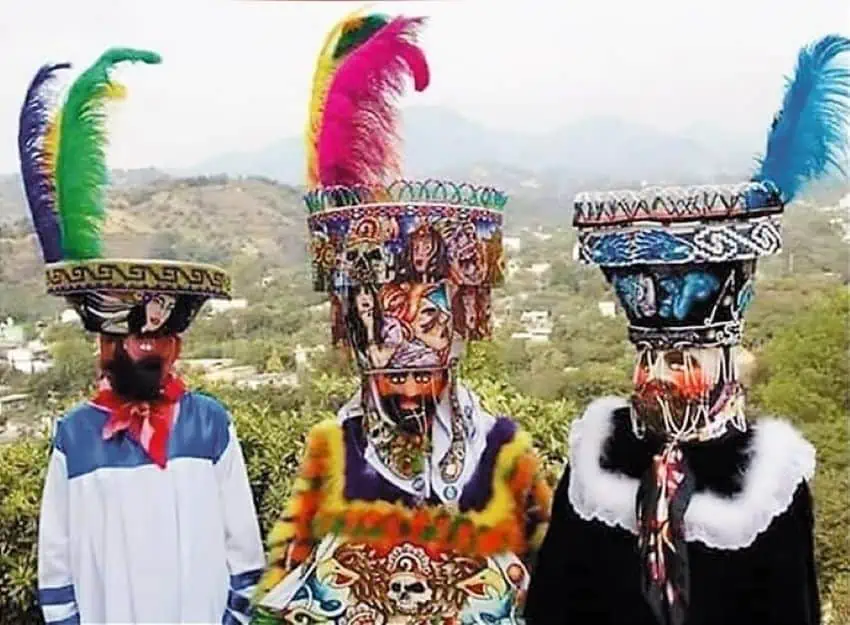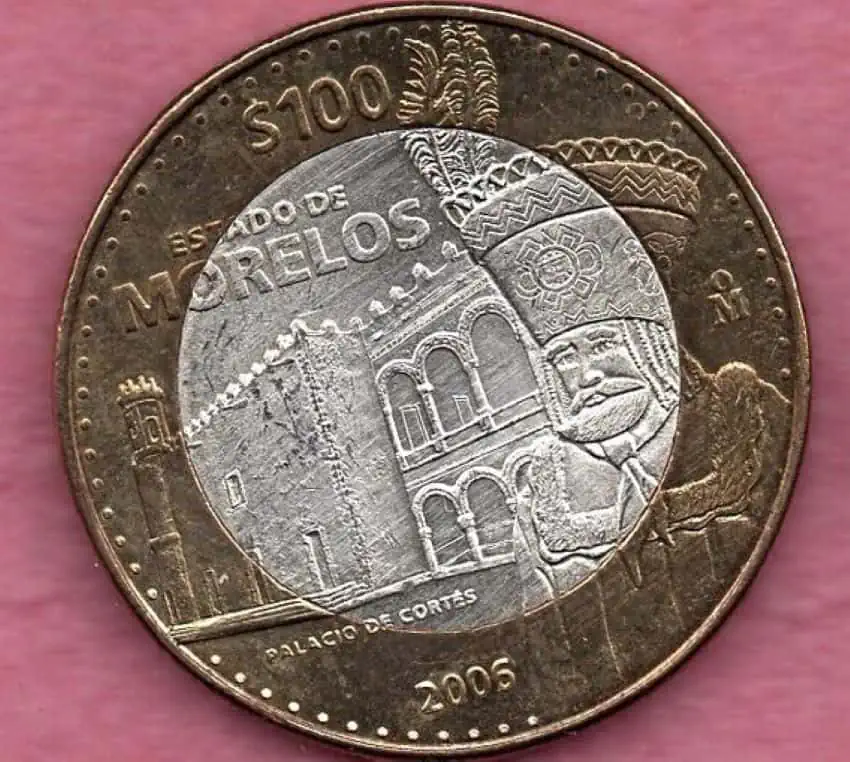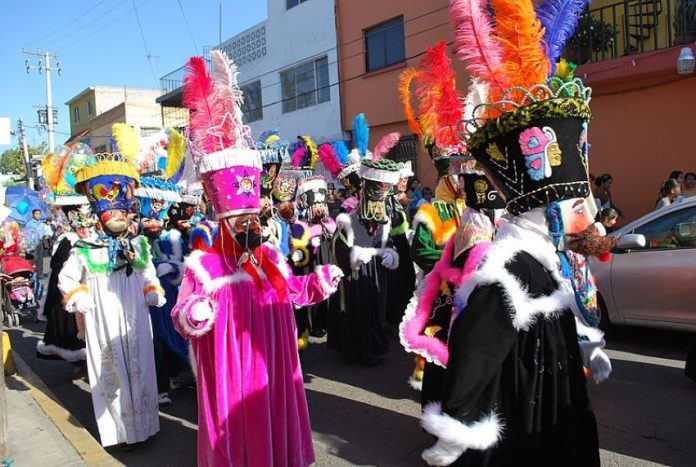The Chinelos, costumed dancers who are a regional Mexican Carnival tradition, began as a way to “diss the man” several hundred years ago.
Unfortunately, the festivities were officially canceled this year due to Covid-19. Any events that did go on were clandestine. This is humorous because Carnival has a long history of allowing participants to skirt both convention and authority.
The Chinelos’ case is one act of defiance that evolved into a year-round tradition.
Mexico is not a noted Carnival country. The celebration was introduced here in the colonial period, but authorities frowned on the disrespect it encouraged among the general populace, especially the indigenous.
They eventually succeeded in stamping it out in most of New Spain. The celebrations seen in some coastal cities such as Mazatlán date only from the 19th century.

But a few colonial-era annual celebrations survived in a number of small towns in Tlaxcala, Puebla and Morelos. The indigenous in colonial Morelos were forbidden from participating in the celebrations, so they created their own getups using old clothes and faces that were carefully covered to maintain anonymity.
This need to hide their identities was part of the Chinelos’ origin story. Hiding was extremely important to avoid authorities’ reprisals, as the purpose of dressing up was not only to participate but to mock the ruling classes.
The Chinelos of today originated in Tlayacapan, a scenic town in the north of Morelos. The name is derived from Náhuatl, but like so many words with this heritage, etymologies vary. It may be derived from zineloquie which means disguised, or tzinelohua which means hip movement, a reference to the distinctive dancing Chinelos do. Another etymology focuses on the mask and the mocking aspect, using a combination of chichiltec (“blushing” skin) and niele (to mock). Take your pick which is correct.
Chinelos’ outfits have four principal elements: a long, flowing robe, often with a rectangular tunic over it; a mask; a large, plumed hat and a pair of gloves.
The robes are made of thick material, most often velvet. Hats can be up to a meter high with many large plumes. Both robes and hats can be heavily decorated with embroidery, painting and/or sequins depicting images from Catholicism or pre-Hispanic culture. Today’s masks are made of mesh (easier to breathe in) and feature blue eyes and beards. The gloves are mostly for effect, but they also help to hide identity.
The overall effect is androgynous, although the dancers underneath the costumes are almost always men, usually young ones able to withstand dancing in such garb for extended periods.

These costumes are expensive to make, ranging anywhere from 4,000 to 100,000 pesos (US $$190 to $4,800) — sometimes even more! — depending on complexity, the type of materials used and sometimes the quantity and quality. For example, one of the most prized materials for costumes is Czech glass beads, each laboriously sewn onto the robe or hat one by one.
The demand for such garments means that there are artisans who make a living creating them. Those with the best reputations live in the town of Yautepec, Morelos. Such costumes are also in high demand with collectors, especially those that “have been danced.”
The Chinelos’ traditional purpose of mocking “one’s betters” was maintained for centuries. The basis of the costume is the Spanish of the early colonial period, but other elements were added over time.
One aspect was the addition of gloves and the upturning of the beards found on the masks. This was taken from French fashion of the late 19th century, which the Mexican elite of the time diligently copied.
An influence more local to Morelos was the area’s large sugar cane farms and processing mills. These places brought their usually absentee owners wealth, but they left workers impoverished until after the Mexican Revolution.
Although participating in a Chinelos group is nowhere near as dangerous as it used to be, maintaining anonymity is still an extremely important part of the tradition. Costumes are hidden carefully when not in use. Dancers will dress up while in different houses and will even change all or part of their costumes periodically to keep from being found out.

Chinelos groups have spread and diversified from northern Morelos to the rest of the state, into southern Mexico City and Guerrero. Migration north also took the tradition to California, New York and other areas where Morelenses have settled.
The spread of the dance to other places led to variations in costume that can be associated with certain communities — and sometimes specific groups. The costume closest to the original is still that found in Tlayacapan.
Its robe and hat are white and blue, generally not ornate, although the tunic can be. In most other places, the robes are made of velvet and are more likely to be decorated.
Perhaps because the costume is most important, the dance is exceedingly simple. The most difficult part is that you are jumping around in hot and heavy garments. Any ambient heat becomes stifling, so head bandanas to control the sweat become important.
Although definitely regional, the Chinelos are an important and still-growing tradition. Their performances are no longer limited to Carnival celebrations but are also seen at local festivals year-round and can be hired for private events.
Chinelos are even in the tourism business. The state of Morelos has made them representative of the state, putting them on all kinds of advertising, which further increases their importance and recognition.
Leigh Thelmadatter arrived in Mexico 17 years ago and fell in love with the land and the culture. She publishes a blog called Creative Hands of Mexico and her first book, Mexican Cartonería: Paper, Paste and Fiesta, was published last year. Her culture blog appears regularly on Mexico News Daily.
